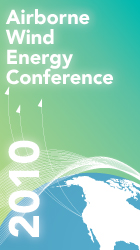Optimizing High-Performance Turbine Blades
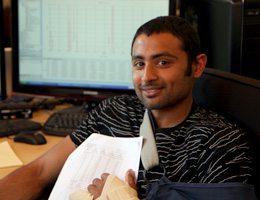
Neel Vora
Like many aspects of the Joby Energy airborne wind energy system, designing turbine blades is an exceptional engineering challenge. No one has designed a blade quite like this before.
That’s because the blades serve multiple purposes -- delivering thrust to lift the system during take-off like a helicopter, then when at appropriate altitude, transitioning to hovering and then switching again to generate power like a windmill.
Neel Vora, a company founding engineer, who was instrumental in creating the initial global optmization model that most of the current designs are derived from, said that the blade requirements present an intriguing challenge.
“To meet the demands of very different operating points the blade needs to be precisely engineered,” Vora said. “We also need to consider noise and structural constraints which impose additional constraints on the speed at which the blades rotate, which in turn affects blade size and the generator design.”
The blade and turbine provide the physical mechanism for both capturing wind energy and propelling the vehicle. According to engineer Ian Horn, designing an optimal blade is one of the keys to gaining a competitive advantage over conventional wind.
“Blade optimization plays a big role in meeting the system’s projected capacity factor and that dictates how effective the design is.”
The blade design team coordinates with the various research and development teams.
“An optimized turbine blade needs to satisfy requirements from various subsystems. From the electrical perspective, the less power it draws in powered flight, the better. Also, we need to mitigate the risk of overheating of the motors in hover,” Horn said. “From the controls perspective, there is a window of performance that the propeller must be able to provide so that the vehicle is controllable in flight.”
Conventional vs. Airborne Turbines
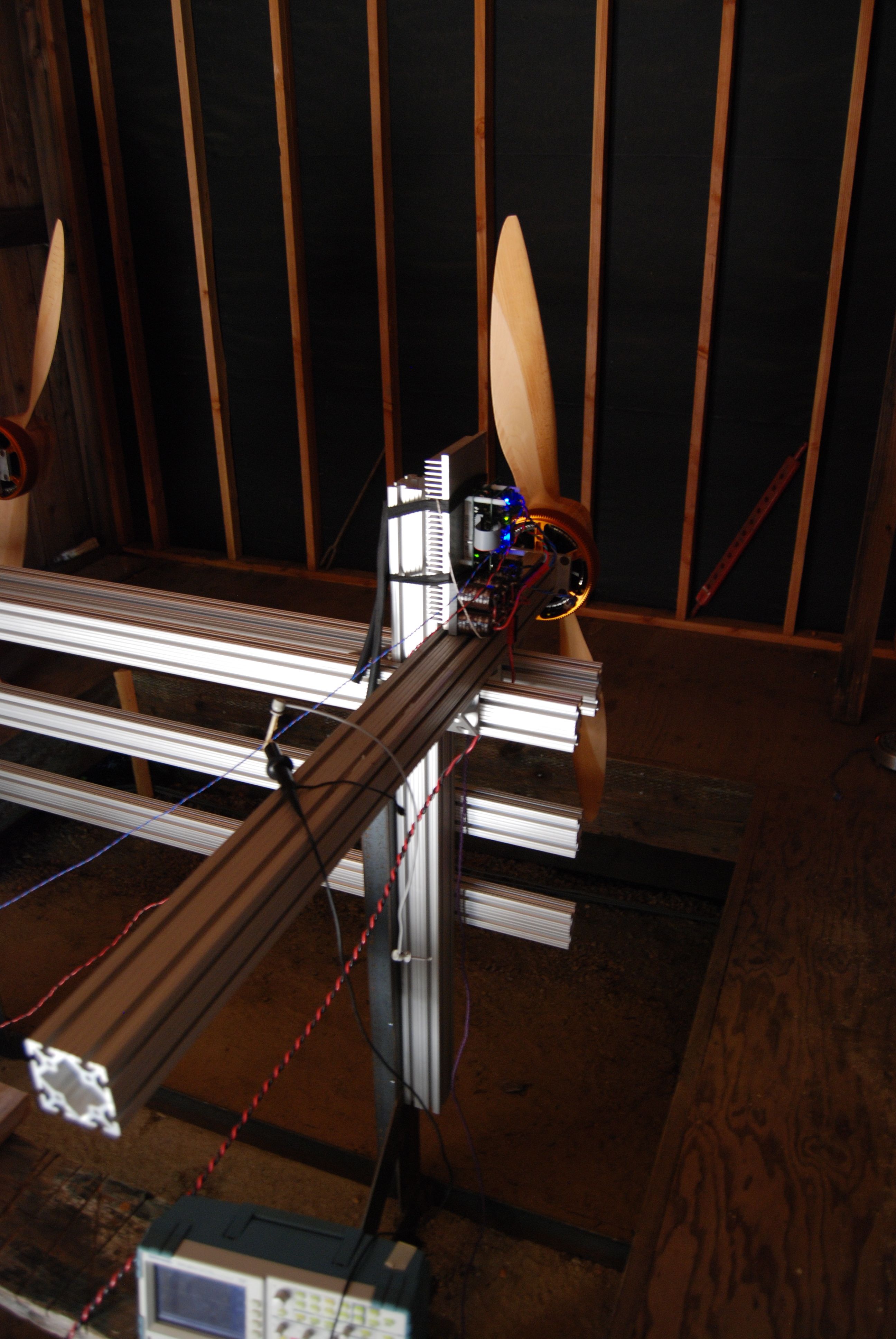
Prop and testing rig
Turbine blade optimization affects the system’s ability to operate in conditions that render conventional wind turbines inoperable or not economically feasible.
“We can operate at lower wind sites than conventional turbines because we can adjust operations to sweep the most effective path,” Horn said. “We can also fly in stronger winds than a conventional turbine.”
According to Horn, airborne wind energy systems use about 1/20 the materials of a conventional turbine to deliver the same amount of energy -- leaving a smaller ecological and materials footprint.
“Airborne wind turbine blades can be much smaller and lighter and are subject to less loading so the entire blade can be designed to extract power,” he said. “Also, smaller diameter blades results in higher rotational speeds, so we can use direct drive motors which eliminates the need for heavy gear systems prone to break down.”
Engineering to a New Paradigm

Prop CAD Model
The turbine engineering team is blazing new ground in blade research and development yet each design goes through a typical process to meet specified engineering requirements.
Vora said that the single blade shape must efficiently lift the system off the ground; effectively transition from hover to forward flight, and then provide power like a ground-based turbine blade does.
"We start with an existing set of requirements derived from our global optimization model, create an initial design using existing blade element codes. This allows rapid iterations and convergence to a desired design,” Vora said. “This is then verified using more sophisticated fluids software that gives us a more realistic picture of the actual aerodynamic performance of the blade design and once the design is finalized, the blades are manufactured and tested to close the loop in the process."
Horn uses existing software to begin the design process and supplements that with his own optimization algorithm. Once Vora gets the initial design from Horn, he checks the design using more sophisticated modeling software, tweaks accordingly and hands over plans to Dave Craig, a mechanical engineer.
Craig then takes the blade designs and machines precision wood prototypes for testing. According to Craig, the most challenging aspect is making sure the shape of the blade prototype is accurate.
“This involves designing fixtures for machining the blades, programming the tool path for the CNC router, and running the machine to cut the wood.”
Then comes the testing.
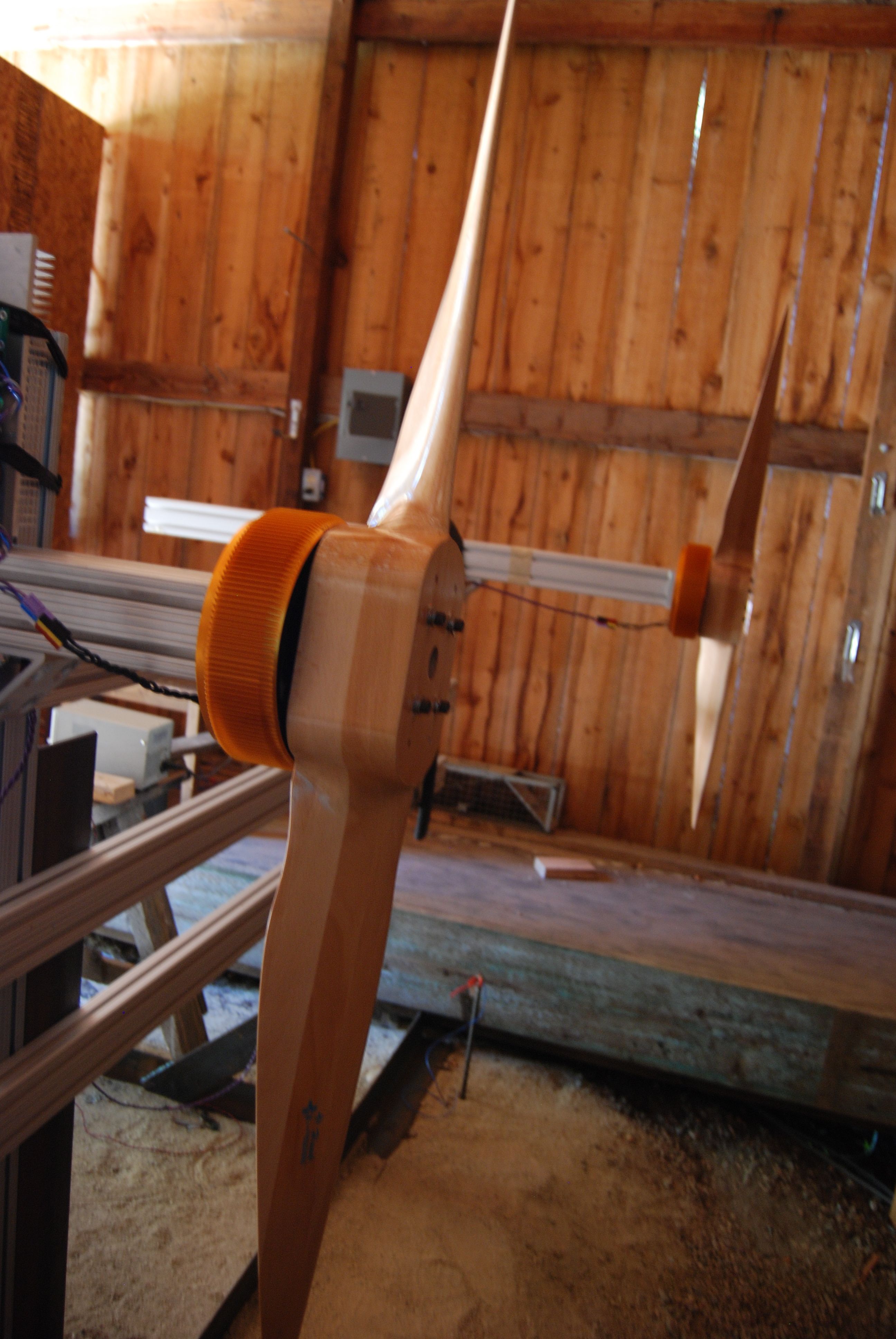
Props ready for testing
“To close the loop, Dan Chebot builds testing apparatus and conducts blade testing,” Craig said. “We get the results and then, we iterate as necessary.”
According to Vora, blades for commercial systems will likely be built using high-strength carbon composite.
“The blades need to be strong enough to withstand cyclic bending and torsion loads across the entire operating regime and be able to last the life of the system,” he said.
For Horn, the reward for his work comes with watching the system prototypes successfully launch, land and complete maneuvers during test flights. “Seeing everything come together is awesome.”
The team completed the design and manufacturing of blades for 10kW and 30 kW prototype systems and is currently working on designing blades for 100 and 300kW systems.
About the engineers:
Neel Vora received a Masters degree in Mechanical Engineering and Aeronautics and Astronautics, from Stanford University and a Bachelors in Aerospace Engineering from the University of Southampton, 2001. Prior to joining Joby Energy, Vora was a Mechanical Engineer for the NASA-funded Satellite Test of the Equivalence Principle and was an Aerospace Engineer for Gravity Probe B, also a NASA-funded mission at Stanford University.
Ian Horn studied Physics at the University of California, Santa Cruz and worked at the Institute for Particle Physics on Application Specific Integrated Circuit design and layout, including optimization for low noise performance. Horn was a on a team which designed a MEMS (micro electro-mechanical systems) deformable mirror (DM) for adaptive optics in long range telescopes and designed the control system for the deformable mirror. Horn recently completed a project of the mathematical method of state-space attractor reconstruction of chaotic systems with both analytic and numerical methods.
David Craig received his Bachelor of Science in Mechanical Engineering from Louisiana State University in 2005 and went on to study Mechanical Engineering at at MIT culminating in a Master of Science in 2008.
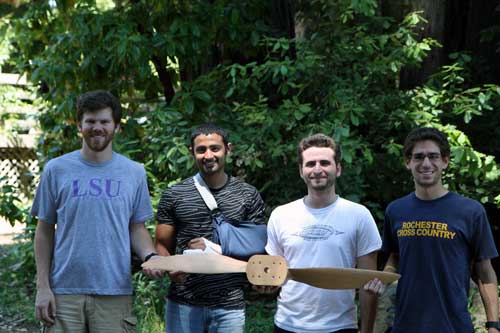
Joby Energy prop optimization team.
From Left: Dave Craig, Neel Vora, Ian Horn and Dan Chebot

